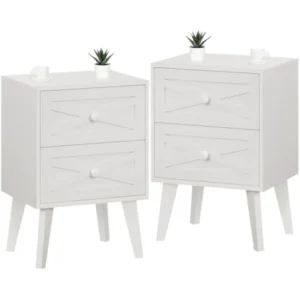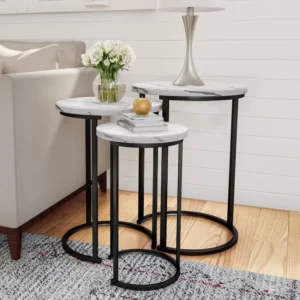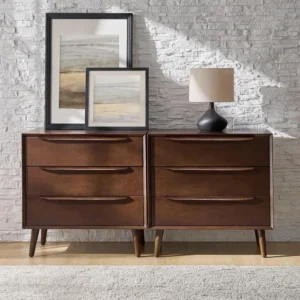Introduction: Understanding the Beauty of Wood Grain Patterns
Wood grain is the natural pattern formed by the arrangement of wood fibers and growth rings in trees. This distinctive characteristic significantly impacts the appearance, feel, and even performance of wooden furniture and décor. Among premium hardwoods, teak and walnut stand out for their exceptional grain patterns that have captivated furniture makers and enthusiasts for generations.
Both teak and walnut offer unique visual signatures that make them highly sought after in fine woodworking and furniture design. Their distinctive grain patterns not only contribute to their aesthetic appeal but also influence their durability, workability, and how they age over time. Understanding these differences helps in making informed decisions when selecting wood for furniture projects or when purchasing wooden pieces.
The timeless appeal of both teak and walnut makes them particularly popular choices in intelligent black mid-century coffee tables and other fine furniture. Their natural beauty is especially evident in mid-century modern teak coffee tables, where the grain becomes a central design element rather than just a material characteristic.
Teak vs. Walnut Grain: At-a-Glance Comparison
Before diving into detailed descriptions, here’s a comprehensive side-by-side comparison of teak and walnut grain characteristics that highlights their distinctive features at a glance:
| Characteristic | Teak Grain | Walnut Grain |
|---|---|---|
| Pattern Direction | Predominantly straight to slightly wavy | Typically straight but often irregular or wavy |
| Texture | Coarse, uneven texture with oily feel | Medium to fine texture with smooth feel |
| Heartwood Color | Golden to medium brown with dark streaks | Chocolate brown with purple/reddish undertones |
| Pore Structure | Large, open pores, often ring-porous | Semi-ring-porous with medium-sized pores |
| Natural Luster | Medium to low natural sheen | Moderate to high natural luster |
| Growth Rings | Distinct, often widely spaced | Moderately distinct, more subtle transition |
| Common Figures | Occasional interlocked grain, ribboned effect | Burls, crotch figure, quilted, fiddleback |
The distinctive characteristics of these two premium hardwoods contribute significantly to their popularity in furniture making. Many woodworkers and designers specifically choose their materials based on these grain differences to achieve particular aesthetic goals in their finished pieces.
For those interested in exploring the distinctive characteristics of teak more deeply, our guide on unique teak grain patterns furniture provides additional insights into the remarkable variations found in this wood.
Visual Gallery: Teak and Walnut Grain Showcase
When examining wood grain, it’s important to understand how different cutting methods reveal distinct patterns. The three primary cutting techniques—quarter-sawn, plain-sawn (or flat-sawn), and rift-sawn—each highlight different aspects of the grain structure.
In quarter-sawn pieces, the growth rings appear as relatively straight lines running across the surface. This cut tends to showcase the medullary rays in walnut, creating a flecked or ribboned appearance. For teak, quarter-sawing reveals its straight, sometimes golden-streaked pattern while minimizing movement over time.
Plain-sawn cuts produce the familiar “cathedral” patterns as they intersect growth rings at various angles. This cutting method typically yields the most dramatic grain patterns in both woods but may result in greater seasonal movement. In walnut, plain-sawing highlights the wood’s rich color variations, while in teak, it accentuates the contrast between early and latewood.
Rift-sawing, cutting at an angle between quarter and plain-sawing, produces straight, consistent grain patterns with minimal figure. This technique is particularly valued for creating clean, modern lines in mid-century modern walnut coffee tables where consistency is desired.
When shopping for wood furniture, examine the grain from different angles and under varying light conditions. The way light interacts with the grain can dramatically change the visual impact, especially after finishing treatments have been applied.
Teak Grain Characteristics in Detail
Pattern and Direction
Teak typically exhibits a straight to slightly wavy grain pattern. What makes teak distinctive is the occasional presence of interlocked grain, where fibers grow in alternating directions through successive growth layers. This creates a ribboned or striped effect when quarter-sawn, adding visual interest to furniture surfaces.
Texture and Feel
One of teak’s most notable characteristics is its coarse, uneven texture. Despite this roughness at the microscopic level, properly finished teak has a remarkably smooth feel due to its natural oils. Running your hand across teak surfaces reveals a distinctive tactile quality that combines smoothness with a subtle, natural resistance.
Natural Oils and Appearance
Teak contains high levels of natural oils and rubber compounds that contribute significantly to its appearance. These oils give teak a subtle golden glow and slightly greasy feel when freshly cut. Over time, exposure to air causes the oils to oxidize, creating the warm honey-to-medium brown patina that teak is famous for.
Color Variations
Fresh teak heartwood ranges from golden brown to medium brown, often featuring darker brown streaks that add character. As teak ages, it develops a silvery-gray patina if left untreated outdoors, or deepens to a rich golden brown when kept indoors and properly maintained.
Pore Structure
Teak has distinctively large, open pores arranged in a ring-porous pattern. These pores often contain white deposits (calcium phosphate) that can be visible as light streaks or dots in the grain. This characteristic pore structure contributes to teak’s excellent weather resistance but can require additional attention during finishing.
For woodworkers and enthusiasts looking to understand how grain direction affects furniture construction, our definitive guide teak grain direction offers valuable insights.
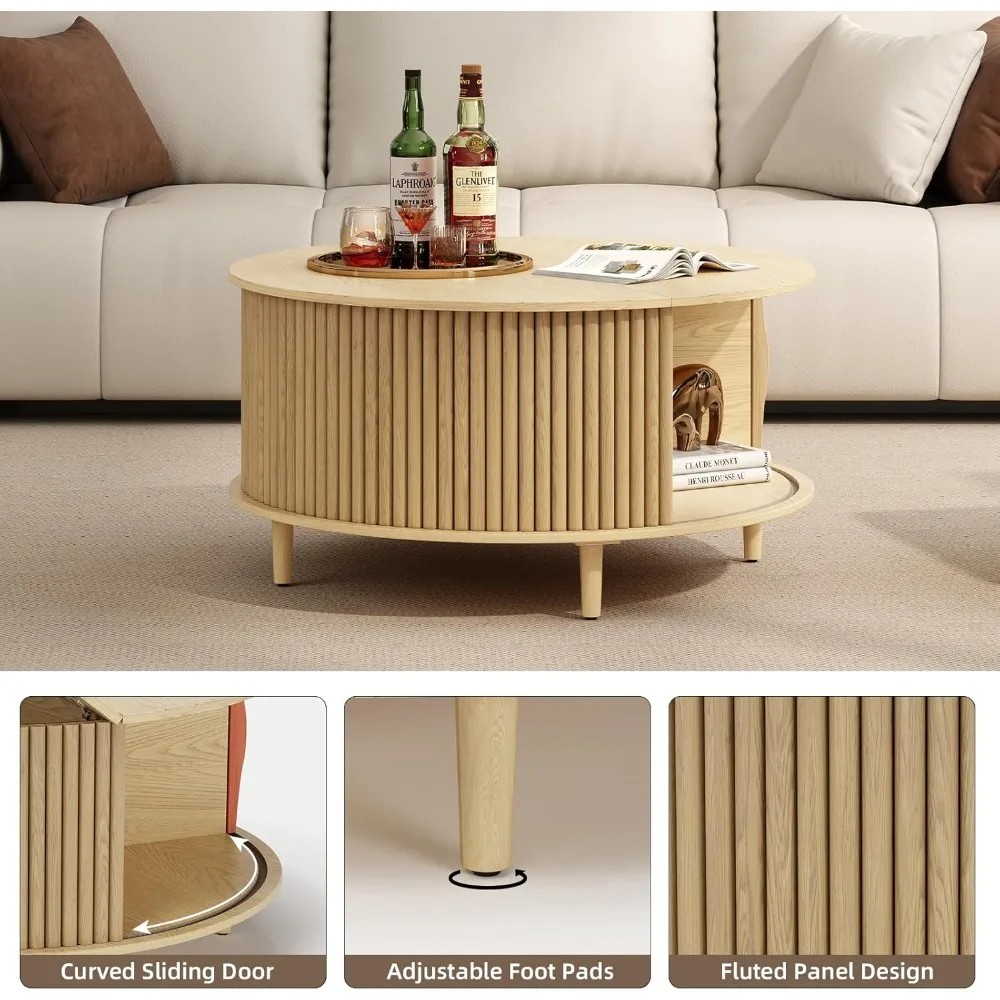
Walnut Grain Characteristics in Detail
Pattern and Direction
Walnut grain is typically straight but frequently features irregular or wavy patterns that create visual interest. This natural variation makes each walnut piece unique. Unlike teak’s sometimes predictable patterns, walnut often surprises with sudden swirls, curves, and directional changes that furniture makers prize for creating distinctive pieces.
Texture and Feel
Walnut possesses a medium-fine texture that feels consistently smooth to the touch. The grain itself has a natural luster that catches light beautifully, especially after finishing. This refined texture contributes to walnut’s reputation as one of the most pleasant woods to work with and to touch in finished furniture.
Color Variation
Walnut heartwood displays a remarkable range of colors, from pale chocolate brown to deep, rich purplish-brown with darker streaks. These color variations often form striking patterns within the same piece. Notably, walnut sometimes exhibits purplish or reddish undertones that add depth and complexity to its appearance, particularly when finished with clear oils or lacquers.
Pore Structure
Walnut features a semi-ring-porous structure with medium-sized pores that transition gradually between earlywood and latewood. This gives walnut a more uniform appearance than the more distinctly ring-porous teak. The pores absorb finishes readily, allowing for excellent staining results and contributing to walnut’s renowned finishing qualities.
Special Grain Figures
Walnut is highly valued for its exceptional figured patterns. These include dramatic burls (swirling, complex patterns from abnormal tree growth), crotch figure (feather-like patterns where branches meet the trunk), quilted patterns (three-dimensional rippled effect), and fiddleback (wavy figure resembling the back of a violin).
When incorporating walnut pieces into your home, understanding its distinctive aesthetic qualities helps in styling interiors walnut furniture effectively with other design elements.
How Grain Affects Wood Movement and Stability
The grain direction in both teak and walnut significantly impacts how these woods move in response to humidity changes. All wood expands and contracts across the grain (perpendicular to the grain direction) much more than along the grain. This natural movement must be accommodated in furniture design to prevent cracking or joint failure.
Teak’s often interlocked grain provides excellent dimensional stability, which is one reason it’s prized for outdoor furniture and boat building. This cross-grained structure restricts movement that might otherwise cause warping or splitting. This inherent stability makes teak particularly suitable for solid wood coffee tables where large, flat surfaces might otherwise be prone to warping.
Walnut, while generally stable, can exhibit more pronounced movement due to its sometimes irregular grain patterns. Furniture makers typically account for this by designing pieces with floating panels or breadboard ends that allow the wood to expand and contract seasonally without compromising structural integrity.
In both woods, quarter-sawn cuts provide the greatest stability as they position the growth rings perpendicular to the widest dimension of boards. This orientation minimizes cupping and warping, making it ideal for table tops and cabinet doors where flatness is essential.
Grain Impact on Workability and Finishing
Teak Workability
Teak’s straight grain generally makes it fairly easy to work with hand and machine tools. However, its high silica content can quickly dull cutting edges, requiring more frequent tool sharpening. The natural oils in teak can also complicate gluing processes, often requiring special preparation or adhesives.
When sanding teak, its grain pattern requires careful attention to direction to avoid tearout. Starting with coarser grits and progressing methodically produces the best results, though the natural oils may occasionally clog sandpaper.
Walnut Workability
Walnut’s even, medium-fine grain makes it exceptionally pleasant to work with. It cuts cleanly with both hand and power tools, planes beautifully, and responds well to fine detailing techniques like carving. While walnut can occasionally present irregular grain that requires careful handling to prevent tearout, it generally behaves predictably under tools.
Finishing Differences
Teak’s high oil content creates unique finishing challenges. Traditional oil finishes may not dry properly, and film-forming finishes like polyurethane may not adhere well without special preparation. Many craftspeople choose to simply clean and buff teak, allowing its natural oils to provide protection.
Walnut, by contrast, accepts nearly all finishes beautifully. Its porous structure absorbs stains evenly, and it develops a rich luster with oil finishes. Film finishes like lacquer and varnish also adhere well to properly prepared walnut surfaces.
For more information about maintaining walnut’s beautiful appearance over time, our article on walnut finish durability care provides valuable maintenance tips.
Identifying Authentic Teak and Walnut Through Grain Analysis
With premium woods commanding high prices, identifying authentic specimens becomes important. Genuine teak displays several distinctive grain characteristics that help differentiate it from lookalikes:
- True teak has a slightly oily feel even when finished
- Authentic teak features a distinct, somewhat spicy scent when freshly cut
- The grain includes characteristic white deposits in the pores
- The color tends toward golden brown rather than reddish tones
Walnut authentication relies on different markers:
- Genuine walnut heartwood displays rich chocolate brown colors with purple undertones
- The transition from sapwood (pale cream color) to heartwood is usually fairly abrupt
- Under magnification, walnut shows characteristic pore arrangements different from similar-looking woods
- Authentic walnut has a mild, pleasant scent when freshly cut
When selecting fine furniture pieces like mid-century modern side end tables, understanding these authentication markers helps ensure you’re investing in genuine materials.
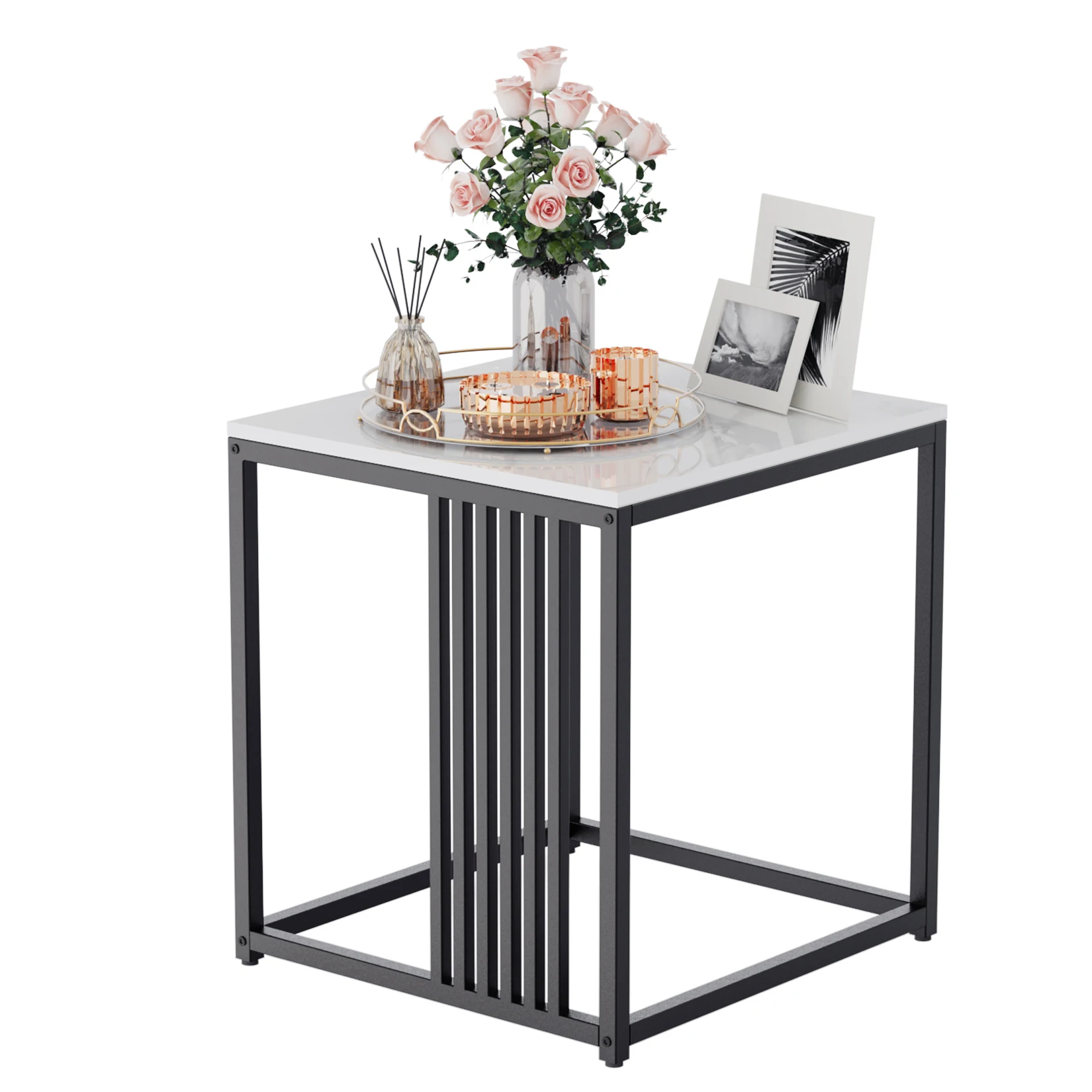
Grain Influence on Design Applications and Aesthetics
The distinctive grain patterns of teak and walnut naturally lend themselves to different design applications and aesthetic outcomes:
Teak’s straight, consistent grain with golden tones creates a warm, inviting appearance that works beautifully in both contemporary and traditional settings. Its regular pattern provides a sense of calm and order, making it ideal for large surface areas where visual stability is desired. The golden hues of teak complement warm color palettes and pair particularly well with blues, greens, and earthy tones.
Walnut’s more varied grain with dramatic color shifts creates visual energy and movement. This makes walnut particularly suitable for statement pieces where the wood itself becomes a focal point. Its rich brown tones with purple undertones work exceptionally well in sophisticated interiors, complementing both cool and warm color schemes. Walnut’s elegant appearance pairs beautifully with brass, leather, and glass elements common in black mid-century coffee table design.
In mid-century modern design, both woods play important but different roles. Teak’s clean lines and warm tones embodied the Danish modern aesthetic, while walnut’s rich character featured prominently in American mid-century pieces by designers like George Nakashima, who celebrated the wood’s natural edges and dramatic grain patterns.
Beyond Visual Differences: Tactile and Sensory Comparison
The sensory experience of wood extends far beyond visual appearance. Teak and walnut offer distinctly different tactile experiences due to their unique grain structures:
Teak presents a smooth yet slightly textured feel due to its natural oils and pronounced grain pattern. Even when finely sanded, you can subtly feel the grain structure beneath your fingertips. This tactile quality gives teak a warm, organic presence that connects users to the natural world. Over time, the oils in teak create a patina that becomes increasingly smooth and pleasant to touch.
Walnut, in contrast, offers an exceptionally smooth, almost silky feel when properly finished. Its fine grain structure creates a more uniform surface texture that feels luxuriously refined. This tactile elegance makes walnut particularly suitable for pieces that will be frequently touched, such as chair arms, table edges, and cabinet handles.
Both woods warm to the touch more quickly than synthetic materials, but teak’s natural oils give it a slightly warmer initial feel compared to walnut. This subtle difference contributes to the overall sensory experience of furniture made from these materials, as showcased in many best black mid-century coffee tables that combine wood grain with modern design elements.
How Environmental Factors Affect Grain Development
The distinctive grain patterns we admire in both teak and walnut begin forming long before the trees are harvested. Environmental conditions during growth significantly influence the final grain appearance:
Teak grown in plantation settings often develops faster and more uniform grain patterns than old-growth teak from natural forests. Slower-growing trees from challenging environments typically develop tighter grain patterns with more interesting variations. The tropical climates where teak thrives contribute to its straight grain and natural oil content, which evolved as defenses against insects and fungi.
Walnut trees respond dramatically to their growing conditions. Trees grown in open areas with less competition develop wider growth rings and often more dramatic figure in the wood. Soil conditions affect mineral uptake, which can influence color variations within the wood. Even stress factors like unusual weather patterns can create sought-after figured patterns such as curly grain.
For a deeper exploration of how different growing conditions affect wood appearance, our article on teak wood grain variations regions examines how geography influences teak’s distinctive characteristics.
Care and Maintenance: Preserving Grain Beauty Over Time
Proper care ensures that the natural beauty of wood grain continues to enhance your furniture for generations:
Teak Maintenance
To preserve teak’s distinctive grain:
– Clean regularly with a mild soap solution and soft brush to remove surface dirt
– Allow natural patina to develop or apply specialized teak oil sparingly if preferred
– Avoid traditional furniture polishes, which can build up in the grain
– Keep indoor teak away from direct sunlight to prevent uneven fading
– Address scratches by light sanding with the grain, then applying appropriate oil
Walnut Maintenance
To maintain walnut’s rich appearance:
– Dust regularly with a soft cloth, following the grain direction
– Use quality furniture wax or polish specifically formulated for fine woods
– Maintain consistent indoor humidity levels (40-60%) to prevent excessive movement
– Address water rings promptly with fine steel wool and appropriate polish
– Protect from direct sunlight, which can fade walnut’s rich color over time
For both woods, understanding the grain direction is crucial when cleaning or refinishing, as working against the grain can cause damage that emphasizes rather than reduces imperfections.
Mid-Century Modern End Table Sets of 2, Mid-Century Modern Square Side & End Tables, Mid-Century Modern White Side & End Tables
$348.24 Select options This product has multiple variants. The options may be chosen on the product pageMid-Century Modern Solid Wood Coffee Tables, Mid-Century Modern Teak Coffee Tables
$879.95 Select options This product has multiple variants. The options may be chosen on the product pageMid-Century Modern Danish Coffee Tables, Mid-Century Modern Oval Coffee Tables, Mid-Century Modern Solid Wood Coffee Tables
$390.05 Select options This product has multiple variants. The options may be chosen on the product pageMid-Century Modern Nesting Side & End Tables, Mid-Century Modern Nesting Table Sets, Mid-Century Modern Round Side & End Tables
Price range: $239.35 through $273.06 Select options This product has multiple variants. The options may be chosen on the product pageMid-Century Modern End Table Sets of 2, Mid-Century Modern Walnut Side & End Tables
Price range: $978.89 through $1,957.38 Select options This product has multiple variants. The options may be chosen on the product pageMid-Century Modern Glass Top Coffee Tables, Mid-Century Modern Glass Top Side & End Tables
$460.58 Select options This product has multiple variants. The options may be chosen on the product page
The enduring popularity of mid-century modern Danish coffee tables demonstrates how proper care allows wood grain beauty to enhance homes for decades.
Notable Grain Variations: Specialty Cuts and Rare Figures
Beyond standard grain patterns, both teak and walnut occasionally produce spectacular figured patterns that are highly prized in fine furniture making:
In teak, rare variations include:
– Bee’s wing figure: a shimmering pattern resembling insect wings that changes appearance as viewing angle shifts
– Fiddleback figure: parallel ripples across the grain creating a three-dimensional effect
– Pomelle figure: small, swirling patterns that create a dappled appearance
– Curl figure: areas where the grain appears to form gentle waves across the surface
Walnut is even more renowned for dramatic figured patterns:
– Burl: swirling, complex patterns from abnormal tree growth, resembling intricate puzzles
– Crotch figure: feathered patterns formed where main branches join the trunk
– Quilted figure: three-dimensional rippled effect resembling a padded surface
– Curly/fiddleback: wavy patterns creating alternating light and dark bands
Furniture featuring these rare grain patterns commands premium prices due to both visual impact and scarcity. When examining pieces with claimed figured grain, view them from multiple angles and under different lighting to fully appreciate the three-dimensional quality that distinguishes genuine figure from simulated patterns.
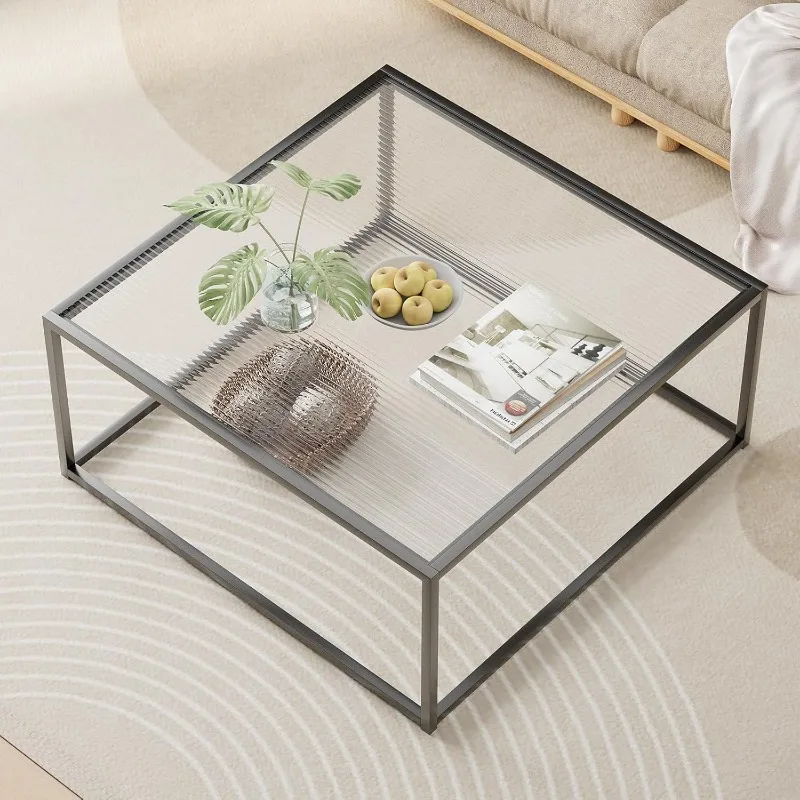
The beauty of figured wood grain complements many interior design approaches, as explained in our guide to styles go well mid-century modern.
Contemporary and Historical Use in Fine Furniture
Throughout furniture history, teak and walnut grain characteristics have influenced design trends and construction techniques:
Historically, teak became prominent in Western furniture during the colonial era but reached its peak popularity during the mid-20th century. Danish designers particularly embraced teak’s clean grain and warm tones to create minimalist pieces that showcased the wood’s natural beauty. Furniture makers developed specialized oil finishes that enhanced teak’s grain while protecting its surface.
Walnut has an even longer history in fine furniture, reaching particular prominence during the Renaissance, William and Mary period, and again during the Art Deco movement. Its dramatic grain patterns were often featured in veneer work, where craftspeople carefully matched sections to create symmetrical patterns that highlighted the wood’s natural beauty.
In contemporary design, both woods remain highly valued but are used differently. Modern teak pieces often feature clean, architectural lines that allow the straight grain to provide subtle visual texture. Modern walnut furniture frequently incorporates live edges and organically shaped elements that showcase the wood’s dramatic grain patterns.
For those interested in authentic historical pieces, mid-century modern vintage coffee tables often feature exemplary grain selection and matching techniques worth studying.
Making Your Selection: Practical Considerations
When deciding between teak and walnut based on grain characteristics, consider these practical questions:
What is your primary aesthetic goal? Teak’s warm, consistent grain creates a calm, orderly appearance, while walnut’s more dramatic patterns make stronger visual statements.
Where will the piece be used? Teak’s durability and stability make it suitable for high-traffic areas and environments with fluctuating humidity, while walnut generally performs better in climate-controlled spaces.
What other woods or materials will it complement? Teak pairs beautifully with lighter woods and cool-toned materials, while walnut complements both light woods and darker materials like leather.
How much maintenance are you willing to perform? Teak generally requires less regular maintenance due to its natural oils, while walnut benefits from more consistent care to maintain its rich appearance.
What is your budget? Generally, quality walnut commands higher prices than similar quality teak due to supply factors and processing requirements.
For mixed-material pieces like decorating black mid-century coffee tables, the wood grain selection provides an important contrast to other elements.
Conclusion
The distinctive grain patterns of teak and walnut represent two different but equally beautiful expressions of nature’s artistry. Teak’s straight, golden-toned grain offers visual stability and warmth, while walnut’s rich, often dramatic patterns provide visual energy and sophistication.
Both woods have earned their places in furniture history through a combination of visual appeal and practical performance. Their grain characteristics influence not just their appearance but also their stability, workability, and maintenance requirements.
While preferences between these magnificent woods ultimately remain subjective, understanding their grain characteristics allows for more informed decisions when selecting furniture. Whether you choose the golden warmth of teak or the rich elegance of walnut, both woods offer the timeless appeal of natural materials that connect our living spaces to the natural world.
The beauty of well-chosen and properly maintained wood grain creates furniture that doesn’t just serve a function but enhances our everyday experience through both visual appeal and tactile pleasure—an enduring quality that synthetic materials simply cannot replicate.


